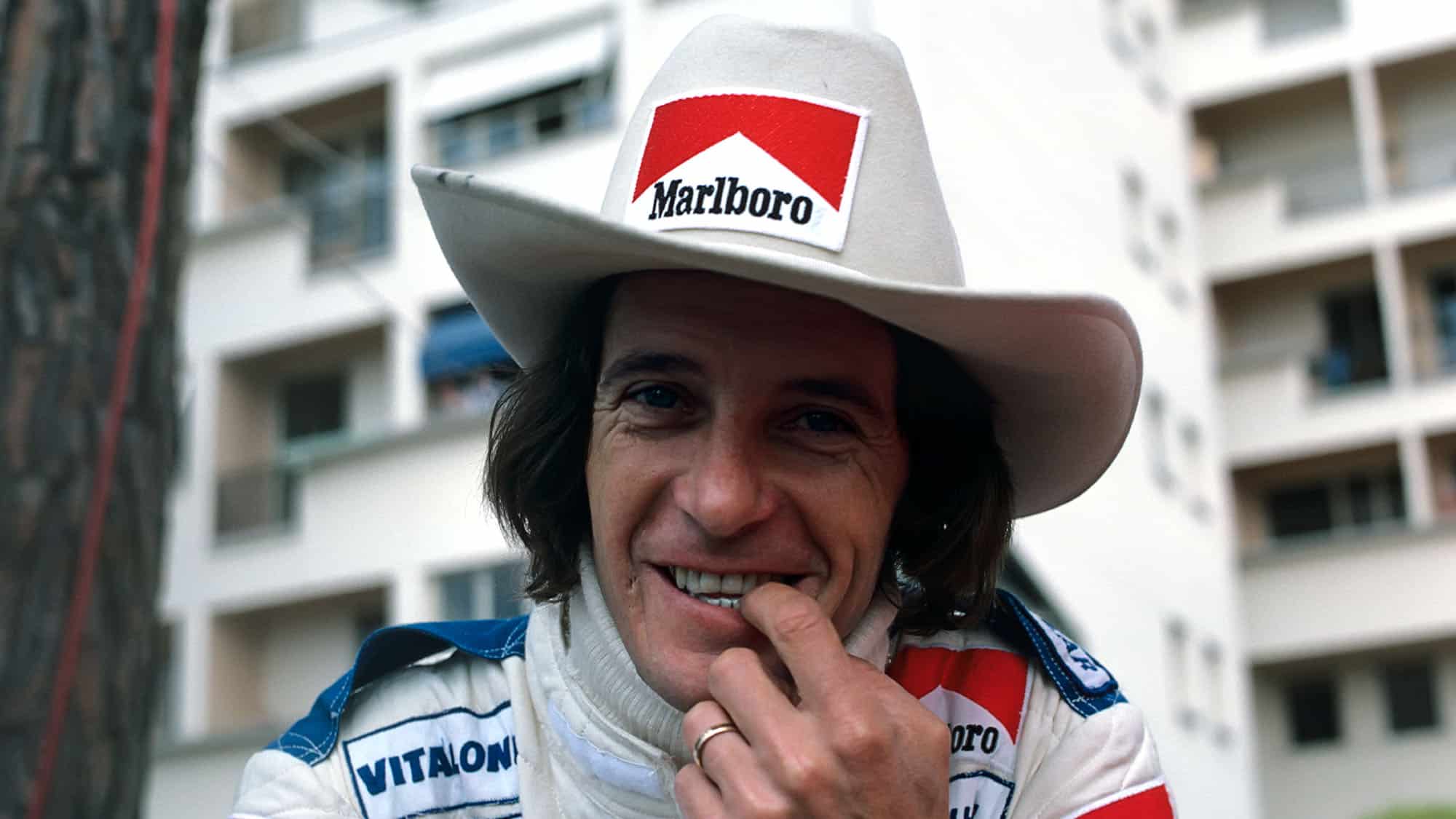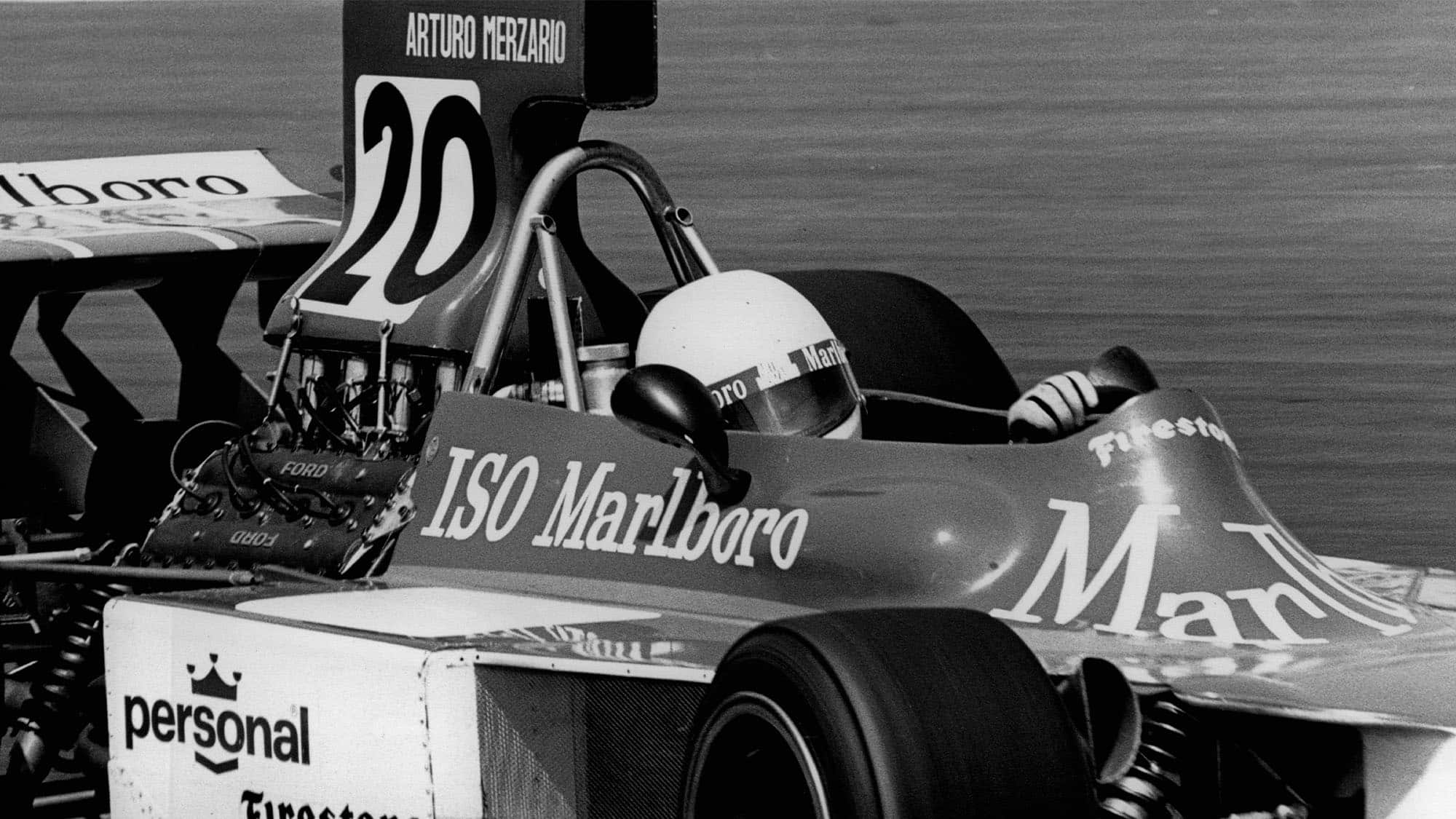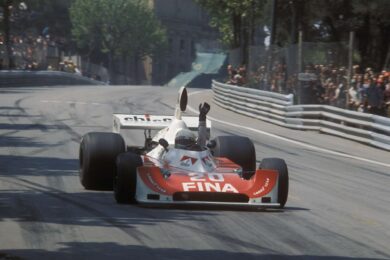Details. He likes to impress with what he recalls. But he agrees the restoration is remarkably sympathetic, given the paucity of information that survives. Mirage had pondered why there was an extender in the pedal box when the car came to them. It all became clear when ‘Little Art’ arrived for his seat fitting.
Old photos and a brochure to lure in sponsors for the 1975 season (see p70), most likely written by Frank himself, offer some insight into the shape of the chisel nose and high airbox. But like the total history of Frank Williams Racing Cars, before the 1977 formation of the Williams team we know today, information is convoluted and patchy. Posterity was far from Frank’s mind as he wheeled, dealed and scraped through the ’70s.
The trusty Cosworth DFV fires up first time and Merzario, complete with period white helmet and Marlboro flashes, rolls into the pitlane. It’s freezing. “In 1974 I remember doing a lap of Monaco in this car with my wife and a blond friend riding on the sidepods,” he’d told me. “It was a slow lap – only 100kph!” Little Art’s reputation as a wild one was no exaggeration, but still he’s a professional. There’ll be no madness today. I’ll confess I’m a tad disappointed.
Merzario trundles gingerly down the pitlane to join the ubiquitous Porsche 911 and Caterham that always seem to be at these mid-week open tests. The blip of downchanges echoes as Merzario gets back into character.
FW03 slides into view out of Goddards and Merzario accelerates over the finish line. He brakes early for Redgate, but the downchanges are crisp and precise. He manages five laps before the 911 ditches into the Redgate sand and the session is red-flagged. As FW03 is rolled back into the garage, James Hanson puts his hand on the slick tyres. They’re stone cold. In these temperatures, he was right to take it easy.
Then the rain comes, and it doesn’t stop. I ask Merzario whether he fancies another go, but I know the answer before I finish the question. “It was very easy to crash. Not correct,” he says with a wag of his finger. “Gran casino. Stupid.” But he agrees to some slow laps for photos. After that, we retire to the warmth of the cabin office in the transporter.

The ‘Marlboro Man’ himself always cut a striking figure in the paddock
Bernard Cahier/Getty Images
Shell-shocked Frank Williams ran Marches to little effect in 1971 following the debacle of De Tomaso and the death of his friend Piers Courage the year before. But to qualify for travel subsidies and freight facilities for races outside Europe, he needed to be a constructor. The Len Bailey-designed Politoys FX3 was the result in ’72, but Henri Pescarolo wrote it off on its debut at the British Grand Prix.
So Frank tried another new approach for 1973, under another new name: Iso-Marlboro, in deference to Frank’s new title sponsors (he couldn’t afford to be precious about such things). Renzo Rivolta built his first Iso GT car in 1962 and named it after himself, with styling by Bertone. The Grifo followed in 1965, with the Lele replacing the Rivolta in ’69. But when Marlboro suggested a link-up in F1 for ’73, Iso was already in trouble. Still, the two companies pledged £40,000 each to Frank Williams, although as Frank told Maurice Hamilton for his biography of the man and the team, “Iso forgot to pay after the first 5000 lire. They got loads of publicity and I got loads more debt. But Marlboro always paid, thank God.”
Marlboro had plunged into F1 with BRM, but the in-decline team offered little value for money. So it was decided the tobacco giant should pour some cash into a bottom-end outfit to show that a huge corporation wasn’t averse to backing an underdog. Frank’s team fitted the bill.






